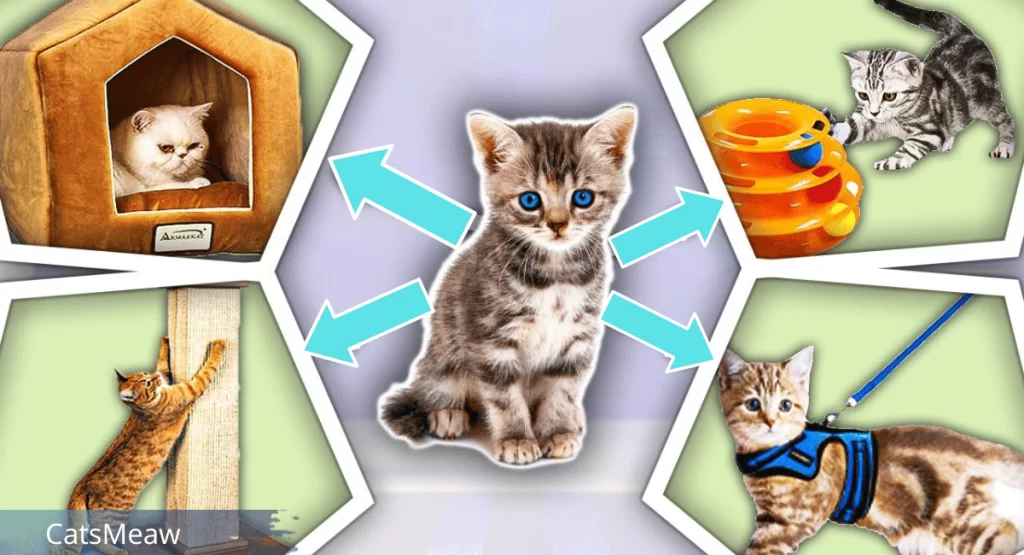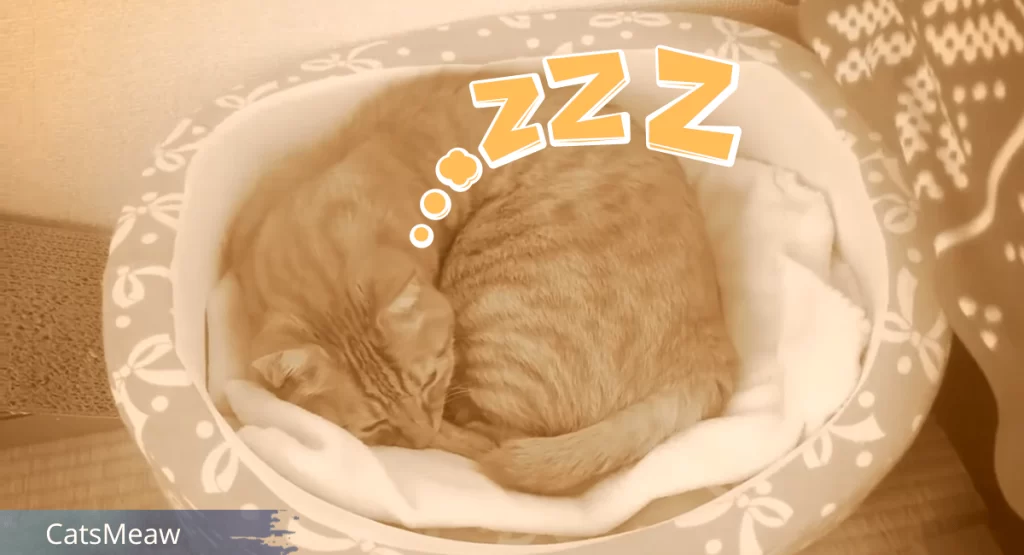Bringing a new kitten to your home is a joyful and exciting experience. However, it also requires careful planning and preparation to ensure that your new furry friend has everything they need to feel safe, comfortable, and loved. In this new kitten checklist, I will guide you through the essential steps and supplies to make your new kitten’s transition smooth and stress-free.

Table of Contents
Preparing your home for a new kitten
Before bringing your new kitten home, it’s important to prepare your living space to create a safe and welcoming environment. Start by designating a quiet room where your kitten can feel secure during their initial adjustment period. Remove any hazards or toxic plants that may pose a threat to your curious feline companion. Ensure that all electrical cords are secured and out of reach to prevent accidents.
Next, provide your kitten with a cozy bed or blanket in their designated space. This will become their safe haven, where they can retreat to when they feel overwhelmed or tired. Set up a scratching post to encourage healthy scratching behavior and protect your furniture. Additionally, invest in some interactive toys to keep your kitten entertained and mentally stimulated.
Essential supplies for a new kitten
To ensure your new kitten has everything they need for a comfortable and happy life, it’s important to have the essential supplies ready before their arrival. Here is a new kitten checklist of items you should consider:
- Food and water bowls: Choose shallow, easy-to-clean bowls made of ceramic or stainless steel.
- Kitten food: Opt for high-quality, age-appropriate kitten food to support their growth and development.
- Litter box: Provide a litter box with low sides for easy access and ensure it is placed in a quiet and private area.
- Litter: Select a litter that is safe for kittens and easy to clean.
- Carrier: A sturdy and secure carrier is essential for safe transportation to the veterinarian or other destinations.
- Collar and ID tag: Purchase a collar with a breakaway feature and attach an ID tag with your contact information.
- Grooming supplies: Invest in a soft brush or comb for regular grooming sessions and nail clippers to keep their claws trimmed.
- Bedding and blankets: Provide comfortable bedding to create a cozy sleeping area for your kitten.
- Toys: Offer a variety of toys to keep your kitten entertained and engaged.
Setting up a safe and comfortable space for your kitten
Creating a safe and comfortable space for your new kitten is very important for their health. Start by setting up their designated room with all the new kitten checklist of items mentioned earlier. Ensure that the room is free of any potential dangers or escape routes. Use baby gates to block off any areas that are off-limits to your kitten.
To make the space more inviting, place a soft blanket or bed in a quiet corner for them to relax and nap. Provide a scratching post near their bed to encourage healthy scratching behavior. Place their food and water bowls in a separate area away from their litter box to maintain cleanliness.
Related: Adopting a Cat or Kitten: 8 Things to Consider
It’s also important to offer vertical spaces for your kitten to climb and explore. Install cat shelves or provide a tall cat tree to satisfy their natural instinct to climb and perch. This will not only provide them with exercise but also give them a sense of security and territory.
Feeding and nutrition for kittens
In addition to the previous new kitten checklist recomandations, proper nutrition is vital for the growth and development of your new kitten. It’s crucial to provide them a balanced diet that meets their nutritional needs. Choose a high-quality kitten food that is appropriate for their age and follow the feeding guidelines provided by the manufacturer.
Kittens require a diet that is rich in protein to support their growing muscles and tissues. Look for kitten food formulas that list a quality source of animal protein, such as chicken or fish, as the main ingredient. Avoid food that contains artificial additives, by-products or fillers.
Feed your kitten small, frequent meals throughout the day to accommodate their small stomachs. Provide fresh water at all times and ensure that their water bowl is cleaned and refilled daily. Monitor your kitten’s weight and adjust their food portion sizes accordingly to prevent overfeeding or underfeeding.
Veterinary care and vaccinations for kittens
Ensuring proper veterinary care is essential for the health and well-being of your new kitten which takes place in the new kitten checklist. Schedule an appointment with a veterinarian shortly after bringing your kitten home for a thorough examination and to discuss their vaccination schedule.
Vaccinations are crucial to protect your kitten from common and potentially life-threatening diseases. Your veterinarian will recommend a vaccination schedule based on your kitten’s age and health condition. It typically includes vaccinations for common diseases such as feline distemper, feline herpesvirus, and rabies.
In addition to vaccinations, your veterinarian will also discuss preventive measures for parasites such as fleas, ticks, and intestinal worms. They may recommend a flea prevention treatment, regular deworming, and the use of topical or oral medications to protect your kitten from these parasites.

Regular check-ups and preventive care are important throughout your kitten’s life to ensure their overall health and well-being. Establish a good relationship with your veterinarian and schedule routine visits for vaccinations, wellness exams, and any concerns or questions you may have.
Litter box training and grooming for kittens
Proper litter box training is essential to ensure good hygiene and prevent accidents in your home. Start by placing the litter box in a quiet and easily accessible area. Show your little kittens where the litter box is placed and gently place them in it after meals or naps.
Use a litter that is safe for kittens and scoop the box at least once a day to maintain cleanliness. Gradually introduce your kitten to different types of litter to find one that they prefer. If accidents occur, clean the affected area with an enzymatic cleaner to remove any lingering odor and discourage repeat incidents.
Grooming is an important part of caring for your new kitten. Regular brushing helps to remove loose fur, prevent matting, and strengthen the bond between you and your kitten. Use a soft brush or comb suitable for their fur type and start grooming sessions gradually, making it a positive and enjoyable experience.
Additionally, trim your kitten’s nails regularly to prevent them from becoming too sharp or causing injury. Use special cat nail clippers and be cautious not to cut into the quick, which can cause bleeding and discomfort. If you are unsure, consult your veterinarian or a professional groomer for guidance.
Socialization and playtime for kittens
Socialization and playtime are crucial for your kitten’s development and well-being. Kittens are naturally curious and playful, and they need ample opportunities to explore, interact, and burn off energy.
Providing a variety of toys that stimulate their natural hunting instincts is a one of the most important needs in the new kitten checklist, such as interactive puzzle toys or toys with feathers and bells. Engage in interactive play sessions with your kitten using toys like wand teasers or laser pointers. This not only provides exercise but also strengthens the bond between you and your furry friend.
Expose your kitten to different sounds, sights, and experiences to help them become well-adjusted and confident cats. Gradually introduce them to new people, animals, and environments, ensuring that the experiences are positive and stress-free.
Training and behavior tips for kittens
Training your kitten is an important part of their development an considered also as exigence in the new kitten checklist and helps establish good behavior habits. Start by teaching them their name and using positive reinforcement, such as treats or praise, when they respond to it. Gradually introduce basic commands like “sit” or “come” using rewards and repetition.
Use positive reinforcement techniques to discourage unwanted behaviorsand encourage desired behaviors. Reward your kitten with treats, praise, or playtime when they display good behavior, and redirect them with toys or distractions when they engage in undesirable behaviors, such as scratching furniture.
Related: Best Tips to Toilet Training Your Cat
Be patient and consistent in your training efforts. Kittens learn best through positive reinforcement and repetition. Avoid punishment or negative reinforcement, as this can cause fear and anxiety in your kitten and hinder their learning process.
Final thoughts on the new kitten checklist
Bringing a new kitten home is an exciting and rewarding experience. By following this new kitten checklist, you can ensure that your furry friend has everything they need for a happy and healthy life. From preparing your home to providing essential supplies, creating a safe and comfortable space, and providing proper care, nutrition, and training, you are setting the foundation for a lifelong bond with your new kitten.
Remember to be patient and understanding during the adjustment period, as your new kitten may be feeling overwhelmed by their new surroundings. Provide them with love, care, and plenty of playtime to help them settle in and feel secure. With time, patience, and proper care, your new kitten will grow into a happy, well-adjusted, and loving member of your family.
Now that you have all the information you need, it’s time to welcome your new kitten into your home and embark on this wonderful journey together!
